
Pataki Emma naplója
¥58.29
Восстановление зрения без вмешательства врачей! Здесь детально описаны самые действенные методики улучшения зрения Э. Аветисова, М. Норбекова, П. Брэгга, У. Бейтса. Книга расскажет, как избавиться от проблем со зрением, а тесты позволят выявить различные заболевания глаз на ранней стадии. Также вы узнаете о проверенных веками способах восстановления зрения с помощью йоги, аюрведы, цигуна и др. Средства народной медицины, упражнения и рекомендации по лечебному питанию помогут излечить глаукому, катаракту и др. Vosstanovlenie zrenija bez vmeshatel'stva vrachej! Zdes' detal'no opisany samye dejstvennye metodiki uluchshenija zrenija Je. Avetisova, M. Norbekova, P. Brjegga, U. Bejtsa. Kniga rasskazhet, kak izbavit'sja ot problem so zreniem, a testy pozvoljat vyjavit' razlichnye zabolevanija glaz na rannej stadii. Takzhe vy uznaete o proverennyh vekami sposobah vosstanovlenija zrenija s pomoshh'ju jogi, ajurvedy, ciguna i dr. Sredstva narodnoj mediciny, uprazhnenija i rekomendacii po lechebnomu pitaniju pomogut izlechit' glaukomu, kataraktu i dr.
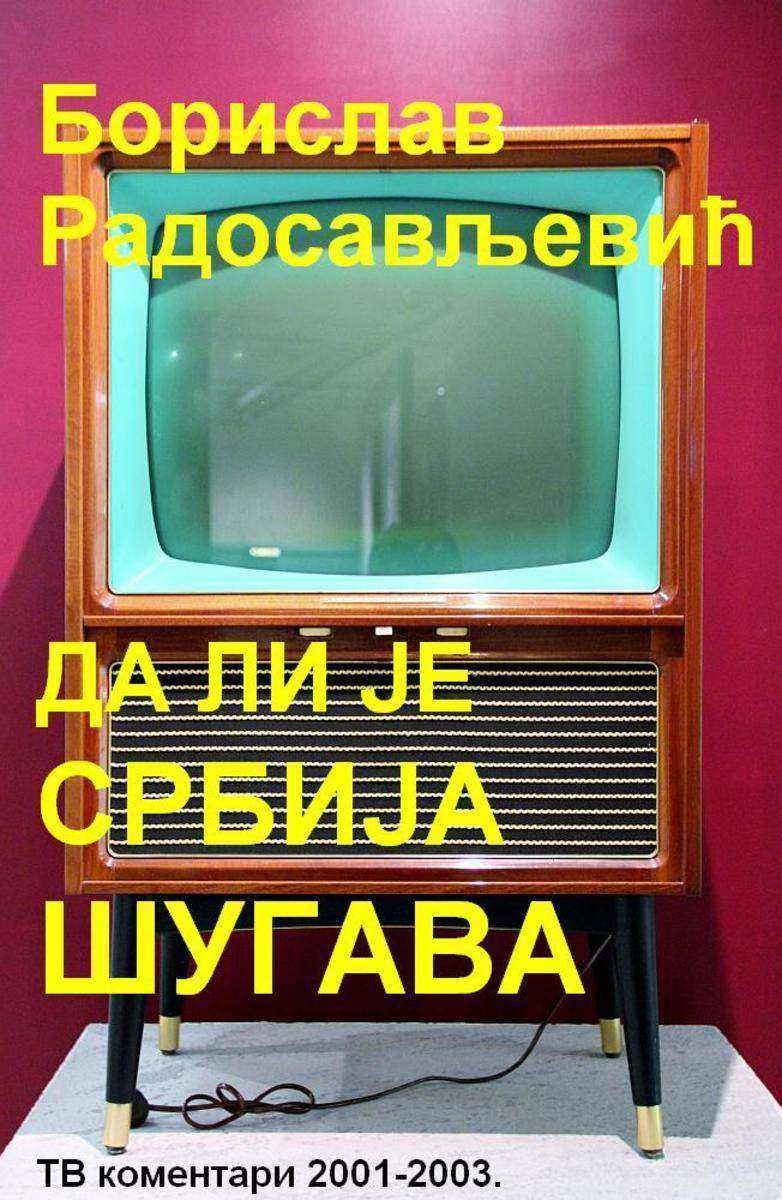
Да ли ?е Срби?а шугава
¥27.96
Автор книги?– кандидат медицинских наук, врач с?многолетним опытом – просто и?понятно рассказывает о?здоровье и?отвечает на?самые распространенные вопросы. ? Предвестники серьезных недугов ??Факторы риска заболеваний сердца ??Тест на?определение склонности к?гипертонии ? Симптомы и диагностика распространенных заболеваний ??При каких признаках нужно немедленно обращаться к?врачу ??Традиционные и?народные способы профилактики и?лечения артериальной гипертензии, ишемической болезни, стенокардии, аритмии, сердечной недостаточности и?др. ??Лечение травами ??Лечебное питание ??Лечебная физкультура и?многое другое. Avtor knigi?– kandidat medicinskih nauk, vrach s?mnogoletnim opytom – prosto i?ponjatno rasskazyvaet o?zdorov'e i?otvechaet na?samye rasprostranennye voprosy. ? Predvestniki ser'eznyh nedugov ??Faktory riska zabolevanij serdca ??Test na?opredelenie sklonnosti k?gipertonii ? Simptomy i diagnostika rasprostranennyh zabolevanij ??Pri kakih priznakah nuzhno nemedlenno obrashhat'sja k?vrachu ??Tradicionnye i?narodnye sposoby profilaktiki i?lechenija arterial'noj gipertenzii, ishemicheskoj bolezni, stenokardii, aritmii, serdechnoj nedostatochnosti i?dr. ??Lechenie travami ??Lechebnoe pitanie ??Lechebnaja fizkul'tura i?mnogoe drugoe.

TOTAL WAR: Attila kardja
¥34.58
Not many years ago the group Insecta was held even by Zoologists to include numberless small creatures—centipedes, spiders, mites, etc.—which further study has shown to present essential differences of structure, and in popular language any fairly minute animal is still an insect, just as any insect is popularly a “fly”—or, in the United States, a “bug.” Scientifically the use of the term Insect is now much restricted, though still extensive enough in all conscience, since it includes many more than a quarter of a million known species. Zoologists recognise a large group of animals characterised by having no internal skeleton but a more or less firm external coating of a peculiar substance called chitin, often strengthened by calcareous deposits, which necessitates the presence of joints in their bodies, and especially in their limbs if they are to move freely, just as medieval suits of armour required to be jointed. These are the Arthropoda. One subdivision of this group consists of aquatic animals, breathing by gills, and known as Crustacea. Crabs, lobsters, shrimps and “water-fleas” are familiar examples, and with the exception of the so-called land-crabs the only Crustaceans habitually found on land are wood-lice. The other Arthropoda are air-breathing, and since their characteristic breathing organs are branching tubes known as tracheae, the term Tracheata is sometimes used to include them all. They fall naturally into three divisions, the Myriapoda, the Insecta and the Arachnida, and it is in this last-named division that we shall find the spiders. The Myriapoda are the centipedes and millipedes, and having said this we may dismiss them, for insects and arachnids are strictly limited as to legs; and no myriapod can ever be mistaken for a spider. The Arachnida are so varied in structure that it is not easy to give characteristics common to them all, and to any general statement there are bound to be exceptions, but for practical purposes it may be said that while an insect, when mature, has only six legs, and a pair of feelers or antennae of quite different structure, Arachnids have normally eight legs, and their feeling organs are not antennae but leg-like “pedipalps.”
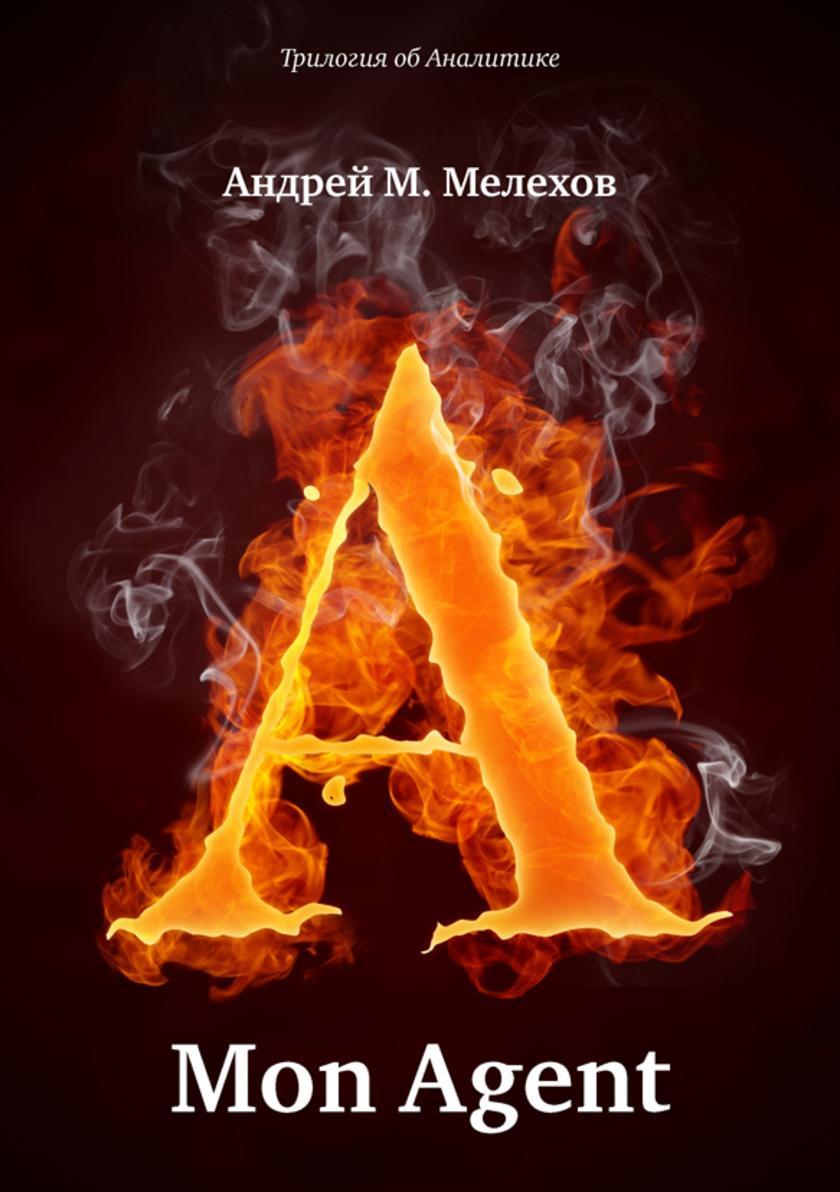
Mon Agent
¥11.77
Realmente, o estudo dos fluidos e das for?as radiantes leva, necessariamente, às formas invisíveis da vida, pois a elas se relaciona fortemente. E por aí que a Ciência nova chegará a reconhecer a existência do mundo dos espíritos e que as imensas perspectivas do Além se abrir abrir?o diante dela.'
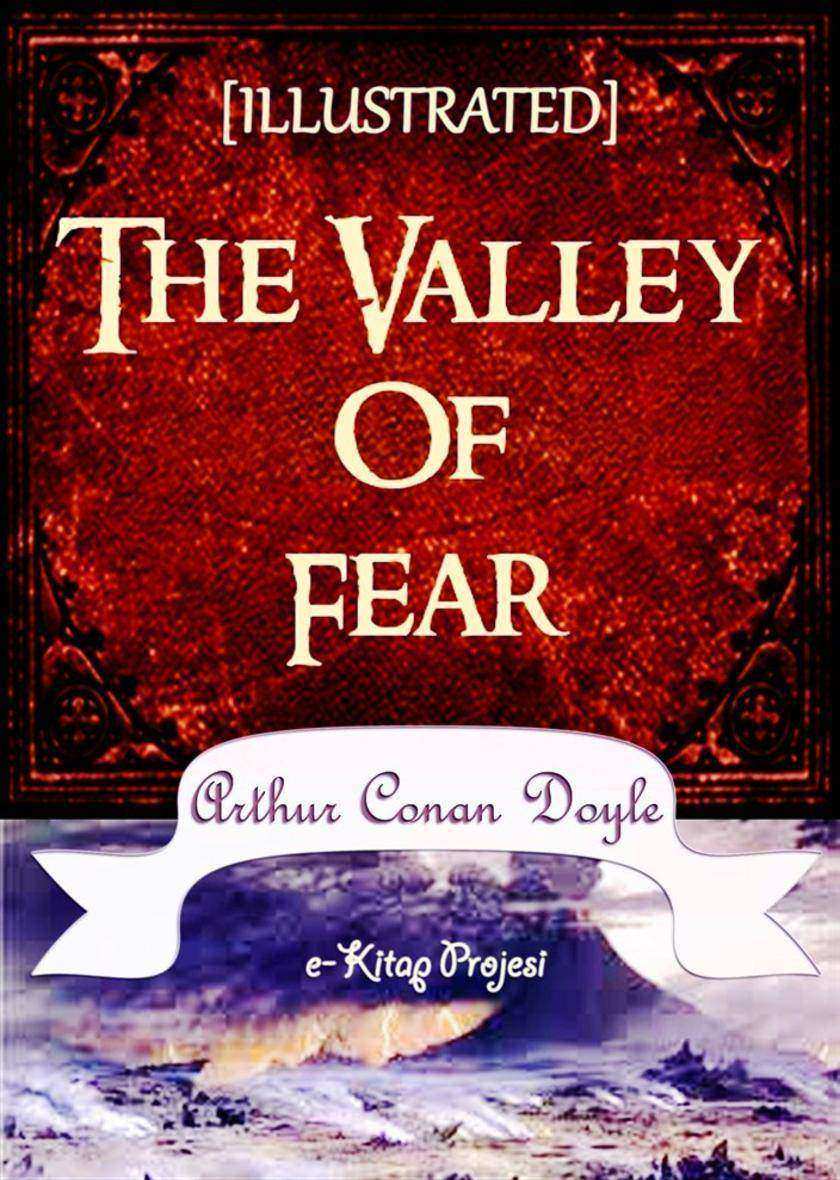
The Valley of Fear: Illustrated
¥18.74
Darwin, ?nsan dahil tüm canl? türlerinin do?al se?i-lim yoluyla bir ya da birka? ortak ata-dan evrildi?ini ?ne sürmü? ve o günün ?artlar?na g?re bu teoriyi destekleyen pek ?ok kan?t sunmu?tur. Darwin'in fikirleri üzerine in?a edilen modern evrim teorisi, bugün biyoloji biliminin temeli ve birle?tirici ??esidir. Evrimin ger?ekle?ti?i ger?e?i Charles Darwin'in ya?ad??? d?nemde, do?al se?ilim teorisinin evrimin ana a??klamas? oldu?u ise 1930'lu y?llarda bilim dünyas? taraf?ndan kabul g?rmü?tür. Darwin'in orijinal teorileri modern evrimsel biyolojinin temelini olu?turmakta, hayat?n ?e?itlili?i üzerine birle?tirici bir mant?ksal a??klama sunmaktad?r. Darwin'in Hayat? da dahil Evrim teorisi ve türlerin k?keni eserini tüm y?nleriyle ele alan bu ba?ucu eserini mutlaka okuman?z? ?neriyoruz.. DARW?N K?MD?R? ?nsan dahil tüm?canl??türlerinin?do?al se?ilim?yoluyla bir ya da birka??ortak atadan?evrildi?ini??ne sürmü? ve o günün ?artlar?na g?re bu teoriyi destekleyen pek ?ok kan?t sunmu?tur.?Darwin'in fikirleri üzerine in?a edilen modern?evrim teorisi, bugün?biyoloji?biliminin temeli ve birle?tirici ??esidir. Evrimin ger?ekle?ti?i ger?e?i Charles Darwin'in ya?ad??? d?nemde, do?al se?ilim teorisinin evrimin ana a??klamas? oldu?u ise 1930'lu y?llarda bilim dünyas? taraf?ndan kabul g?rmü?tür.?Darwin'in orijinal teorileri modern evrimsel biyolojinin temelini olu?turmakta, hayat?n ?e?itlili?i üzerine birle?tirici bir mant?ksal a??klama sunmaktad?r. Darwin'in?do?a tarihine?duydu?u ilgi, ?nce?Edinburgh ?niversitesi'nde?t?p, sonra?Cambridge ?niversitesi'nde?teoloji?okurken geli?ti. Beagle?gemisinde yapt??? be? senelik yolculuk s?ras?nda, zaman?n me?hur jeolo?u?Charles Lyell'?n ortaya att???, ge?mi?teki jeolojik süre?lerin bugünkülerle ayn? oldu?unu savunan teoriyi destekleyecek pek ?ok g?zlem yapt? ve iyi bir jeolog olarak ünlendi.?Ayn? yolculukta, canl?lar?n co?rafi da??l?m? ve?fosiller?üzerine yapt??? dikkatli g?zlemler sonucunda, türlerin birbirine d?nü?ümüyle ilgilenmeye ba?lad? ve 1838'de?do?al se?ilim?fikrini geli?tirdi.?Daha ?nce benzer fikirlerin "sapk?nl?k" olarak nitelendirildi?ini ve bast?r?ld???n? g?rmü? oldu?undan, uzun süre fikirlerini en yak?n arkada?lar? d???nda kimseye a?mad?.?Olas? itirazlara en iyi ?ekilde cevap verebilmek i?in ara?t?rma yapmaya ve kan?t toplamaya ba?lad?.?1858'de?Alfred Russell Walla-ce'dan ald??? bir mektubu okuyunca, Wallace-'?n da kendisininkine benzer bir teori geli?tirdi?ini anlad?, ve nihayet teorisini yay?mlamaya karar verdi. 1859'da yay?mlad????On the Origin of Speci-es?(Türlerin K?keni ?zerine) adl? kitab?, canl?lar?n ortak atalardan evrilerek ?e?itlendi?i fikrinin geni? kabul g?rmesini sa?lad?. Daha sonra yay?mlad????The Descent of Man, and Selection in Relation to Sex?(?nsan?n Türeyi?i, ve Cinsiyete Mahsus Se?ilim) kitab?nda insan evrimini ve cinsel se?ilim fikrini inceledi.?The Expression of the Emotions in Man and Animals (?nsan ve Hayvanlarda Duygular?n ?fadesi) adl? kitab?nda ise insanlar?n ve hayvanlar?n duygular?n? ifade edi? ?ekilleri aras?ndaki benzerlikleri ortaya koydu.

Music in German Philosophy
¥353.16
Though many well-known German philosophers have devoted considerable attention to music and its aesthetics, surprisingly few of their writings on the subject have been translated into English. Stefan Lorenz Sorgner, a philosopher, and Oliver Furbeth, a musicologist, here fill this important gap for musical scholars and students alike with this compelling guide to the musical discourse of ten of the most important German philosophers, from Kant to Adorno.Music in German Philosophy includes contributions from a renowned group of ten scholars, including some of today's most prominent German thinkers, all of whom are specialists in the writers they treat. Each chapter consists of a short biographical sketch of the philosopher concerned, a summary of his writings on aesthetics, and finally a detailed exploration of his thoughts on music. The book is prefaced by the editors' original introduction, presenting music philosophy in Germany before and after Kant, as well as a new introduction and foreword to this English-language addition, which places contemplations on music by these German philosophers within a broader intellectual climate.
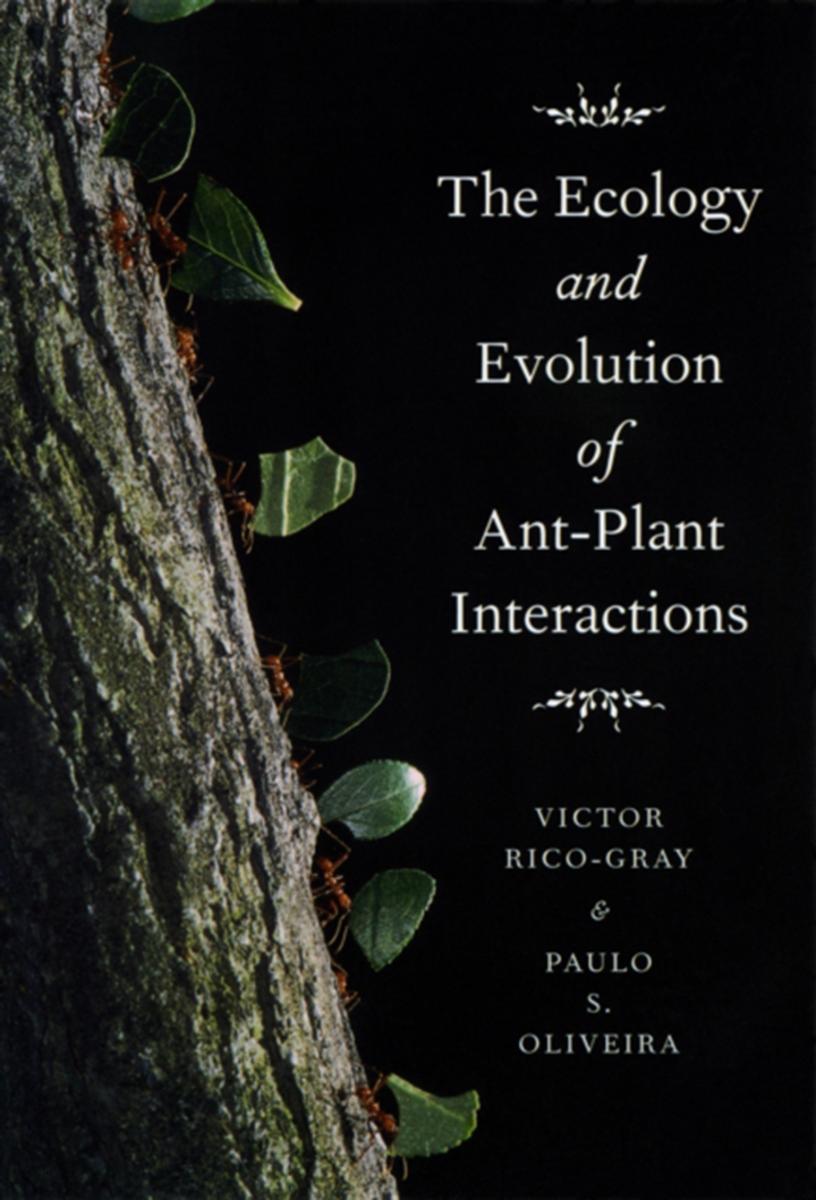
Ecology and Evolution of Ant-Plant Interactions
¥282.53
Ants are probably the most dominant insect group on Earth, representing ten to fifteen percent of animal biomass in terrestrial ecosystems. Flowering plants, meanwhile, owe their evolutionary success to an array of interspecific interactions-such as pollination, seed dispersal, and herbivory-that have helped to shape their great diversity. The Ecology and Evolution of Ant-Plant Interactions brings together findings from the scientific literature on the coevolution of ants and plants to provide a better understanding of the unparalleled success of these two remarkable groups, of interspecific interactions in general, and ultimately of terrestrial biological communities.The Ecology and Evolution of Ant-Plant Interactions synthesizes the dynamics of ant-plant interactions, including the sources of variation in their outcomes. Victor Rico-Gray and Paulo S. Oliveira capture both the emerging appreciation of the importance of these interactions within ecosystems and the developing approaches that place studies of these interactions into a broader ecological and evolutionary context. The collaboration of two internationally renowned scientists, The Ecology and Evolution of Ant-Plant Interactions will become a standard reference for understanding the complex interactions between these two taxa.
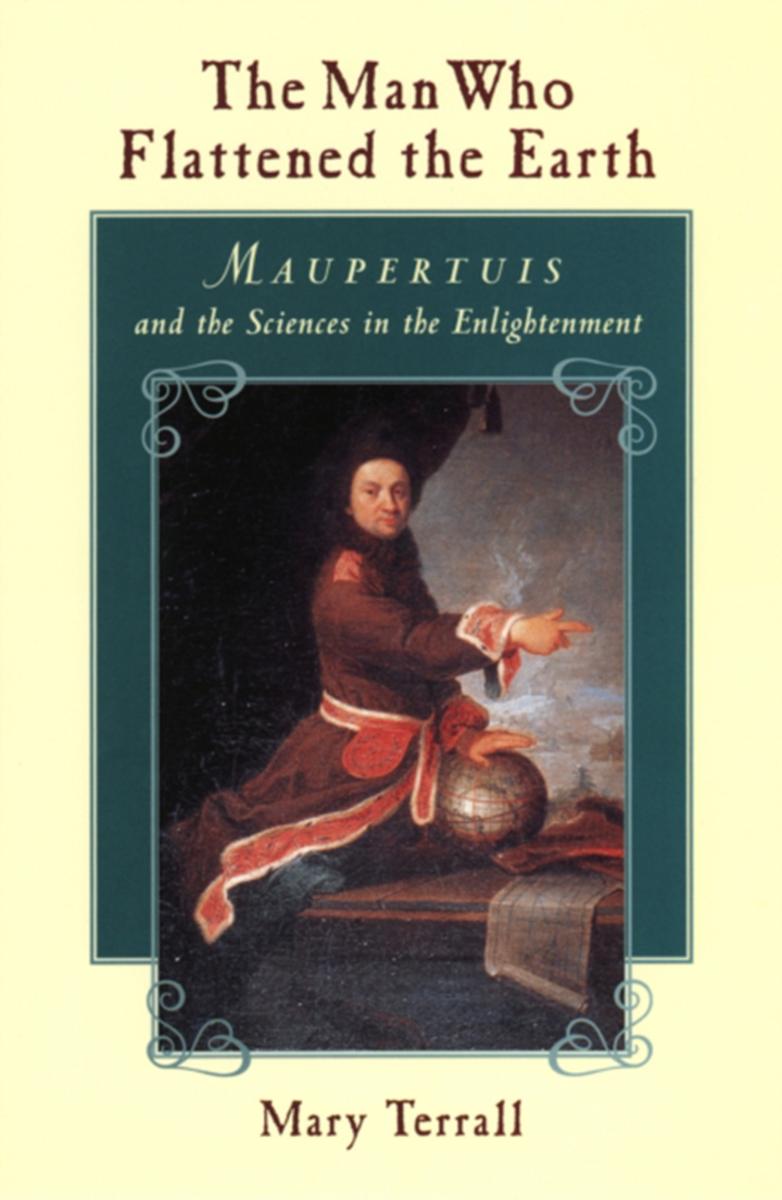
Man Who Flattened the Earth
¥311.96
Self-styled adventurer, literary wit, philosopher, and statesman of science, Pierre-Louis Moreau de Maupertuis (1698-1759) stood at the center of Enlightenment science and culture. Offering an elegant and accessible portrait of this remarkable man, Mary Terrall uses the story of Maupertuis's life, self-fashioning, and scientific works to explore what it meant to do science and to be a man of science in eighteenth-century Europe.Beginning his scientific career as a mathematician in Paris, Maupertuis entered the public eye with a much-discussed expedition to Lapland, which confirmed Newton's calculation that the earth was flattened at the poles. He also made significant, and often intentionally controversial, contributions to physics, life science, navigation, astronomy, and metaphysics. Called to Berlin by Frederick the Great, Maupertuis moved to Prussia to preside over the Academy of Sciences there. Equally at home in salons, cafs, scientific academies, and royal courts, Maupertuis used his social connections and his printed works to enhance a carefully constructed reputation as both a man of letters and a man of science. His social and institutional affiliations, in turn, affected how Maupertuis formulated his ideas, how he presented them to his contemporaries, and the reactions they provoked.Terrall not only illuminates the life and work of a colorful and important Enlightenment figure, but also uses his story to delve into many wider issues, including the development of scientific institutions, the impact of print culture on science, and the interactions of science and government. Smart and highly readable, Maupertuis will appeal to anyone interested in eighteenth-century science and culture.”Terrall's work is scholarship in the best sense. Her explanations of arcane 18th-century French physics, mathematics, astronomy, and biology are among the most lucid available in any language.”-Virginia Dawson, American Historical ReviewWinner of the 2003 Pfizer Award from the History of Science Society
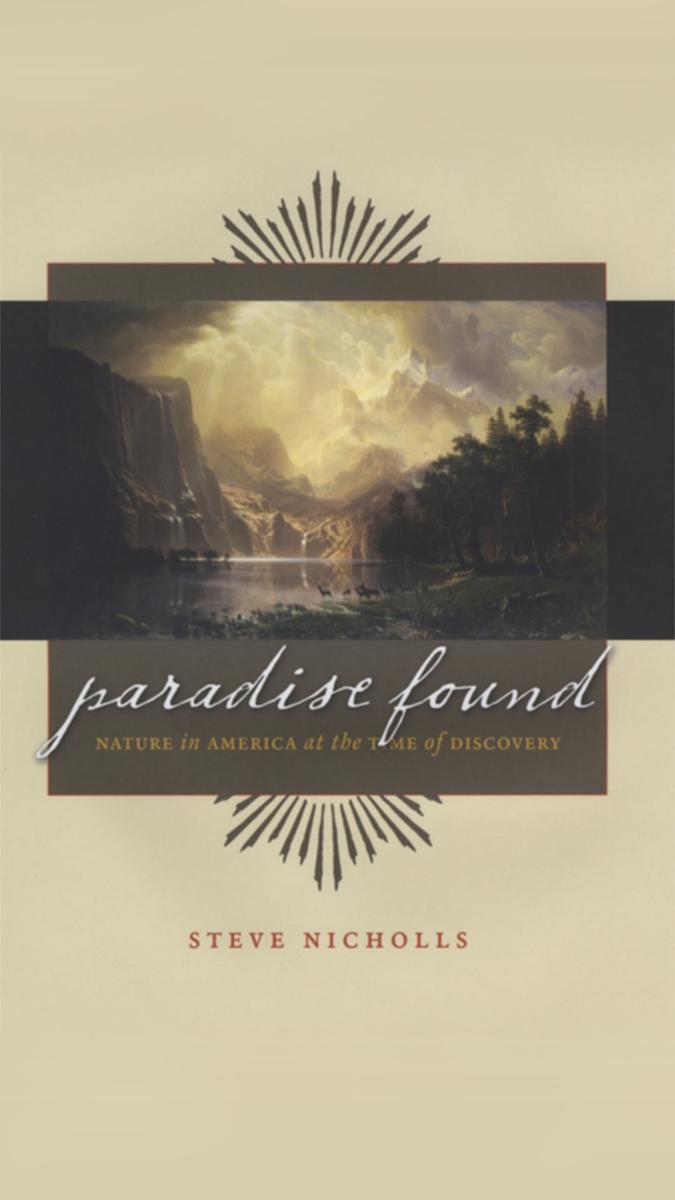
Paradise Found
¥147.15
The first Europeans to set foot on North America stood in awe of the natural abundance before them. The skies were filled with birds, seas and rivers teemed with fish, and the forests and grasslands were a hunter's dream, with populations of game too abundant and diverse to even fathom. It's no wonder these first settlers thought they had discovered a paradise of sorts. Fortunately for us, they left a legacy of copious records documenting what they saw, and these observations make it possible to craft a far more detailed evocation of North America before its settlement than any other place on the planet.Here Steve Nicholls brings this spectacular environment back to vivid life, demonstrating with both historical narrative and scientific inquiry just what an amazing place North America was and how it looked when the explorers first found it. The story of the continent's colonization forms a backdrop to its natural history, which Nicholls explores in chapters on the North Atlantic, the East Coast, the Subtropical Caribbean, the West Coast, Baja California, and the Great Plains. Seamlessly blending firsthand accounts from centuries past with the findings of scientists today, Nicholls also introduces us to a myriad cast of characters who have chronicled the changing landscape, from pre-Revolutionary era settlers to researchers whom he has met in the field.A director and writer of Emmy Award-winning wildlife documentaries for the Smithsonian Channel, Animal Planet, National Geographic, and PBS, Nicholls deploys a cinematic flair for capturing nature at its most mesmerizing throughout. But Paradise Found is much more than a celebration of what once was: it is also a reminder of how much we have lost along the way and an urgent call to action so future generations are more responsible stewards of the world around them. The result is popular science of the highest order: a book as remarkable as the landscape it recreates and as inspired as the men and women who discovered it.

Plan of Chicago
¥100.06
Arguably the most influential document in the history of urban planning, Daniel Burnham's 1909 Plan of Chicago, coauthored by Edward Bennett and produced in collaboration with the Commercial Club of Chicago, proposed many of the city's most distinctive features, including its lakefront parks and roadways, the Magnificent Mile, and Navy Pier. Carl Smith's fascinating history reveals the Plan's central role in shaping the ways people envision the cityscape and urban life itself.?Smith's concise and accessible narrative begins with a survey of Chicago's stunning rise from a tiny frontier settlement to the nation's second-largest city. He then offers an illuminating exploration of the Plan's creation and reveals how it embodies the renowned architect's belief that cities can and must be remade for the better. The Plan defined the City Beautiful movement and was the first comprehensive attempt to reimagine a major American city. Smith points out the ways the Plan continues to influence debates, even a century after its publication, about how to create a vibrant and habitable?urban environment.?Richly illustrated and incisively written, his insightful book will be indispensable to our understanding of Chicago, Daniel Burnham, and the emergence of the modern city.
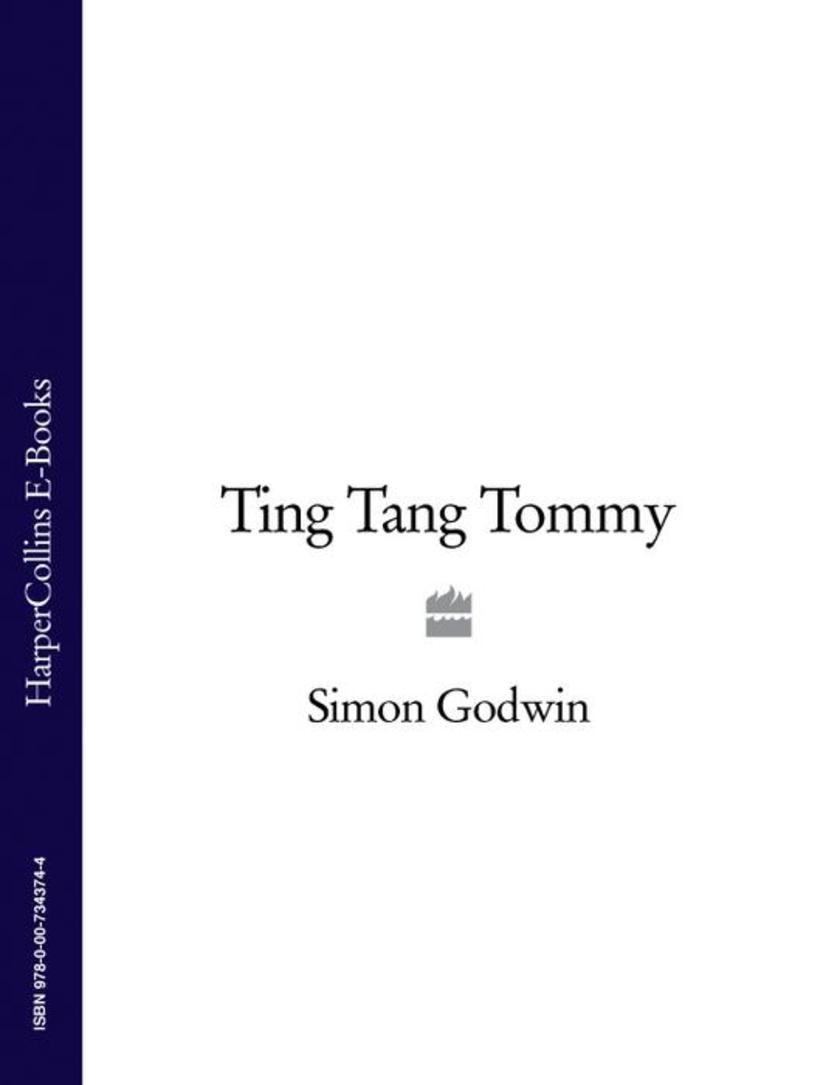
Ting Tang Tommy
¥95.75
Good games are like good jokes. They get remembered and passed on from person to person. But sometimes they get forgotten. ‘Ting Tang Tommy!’ is about remembering the best games we’ve ever known This book sets out to prove that you can play games anywhere – on the beach, having dinner with friends, at a barbeque, with your family at Christmas. It will equip you with loads of simple, memorable games that you can share at any moment of the day – no equipment required. Beautifully produced and designed, ‘Ting Tang Tommy!’ is both a handbook of games and a personal exploration of them, full of potted histories and interesting facts. Each game featured has been tried and tested – and, most importantly, loved.

Fermat’s Last Theorem
¥73.58
I have a truly marvellous demonstration of this proposition which this margin is too narrow to contain.' It was with these words, written in the 1630s, that Pierre de Fermat intrigued and infuriated the mathematics community. For over 350 years, proving Fermat's Last Theorem was the most notorious unsolved mathematical problem, a puzzle whose basics most children could grasp but whose solution eluded the greatest minds in the world. In 1993, after years of secret toil, Englishman Andrew Wiles announced to an astounded audience that he had cracked Fermat's Last Theorem. He had no idea of the nightmare that lay ahead. In 'Fermat's Last Theorem' Simon Singh has crafted a remarkable tale of intellectual endeavour spanning three centuries, and a moving testament to the obsession, sacrifice and extraordinary determination of Andrew Wiles: one man against all the odds.
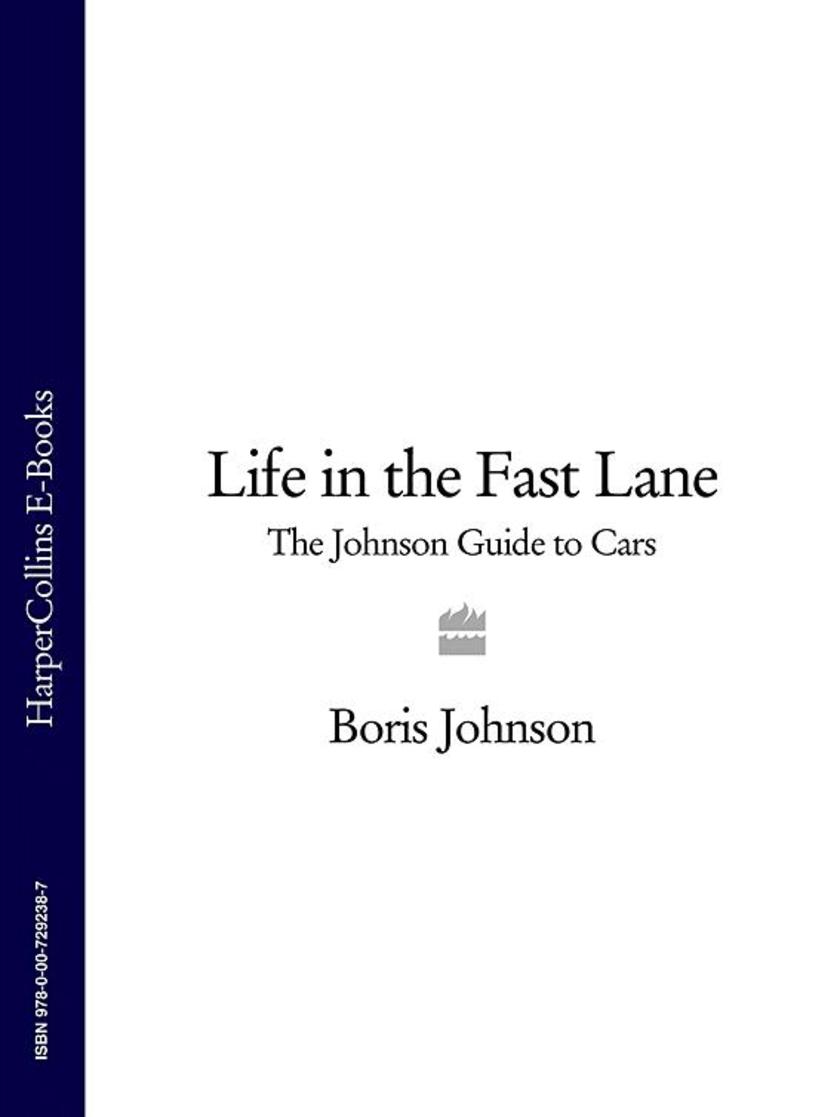
Life in the Fast Lane: The Johnson Guide to Cars
¥72.99
He comes, he sees, he plays with the gadgets… Boris Johnson has been behind the wheel of some of the world’s fastest, most luxurious cars. He’s taken the Jaguar XKR-R for a spin around a posh public school; roared through Islington in the AC Cobra V8; and spent a weekend tearing through the lanes of Sussex in the splendour of the Mercedes S55 AMG. Now he’s going to reveal exactly what it was like. Pondering the fundamental questions – What does it feel like to be overtaken by a female driver when you’re behind the wheel of an Alfa Romeo? Can a car really precipitate a mid-life crisis? – Boris Johnson’s hilarious dispatches from life in the fast lane will appeal to anyone who’s found themselves behind the wheel of one of modern motoring’s finer specimens. But it’s not all glamour and gadgets. Because when he’s not baiting his Holloway neighbours with the Rolls Royce Corniche, we see Boris trying, and failing, to get to grips with the Smart car, and attempting to flee Kosovo in a Fiat Uno. Published together for the first time as a Paperback Original, these hilarious vignettes are vintage Boris: witty, candid and unique.
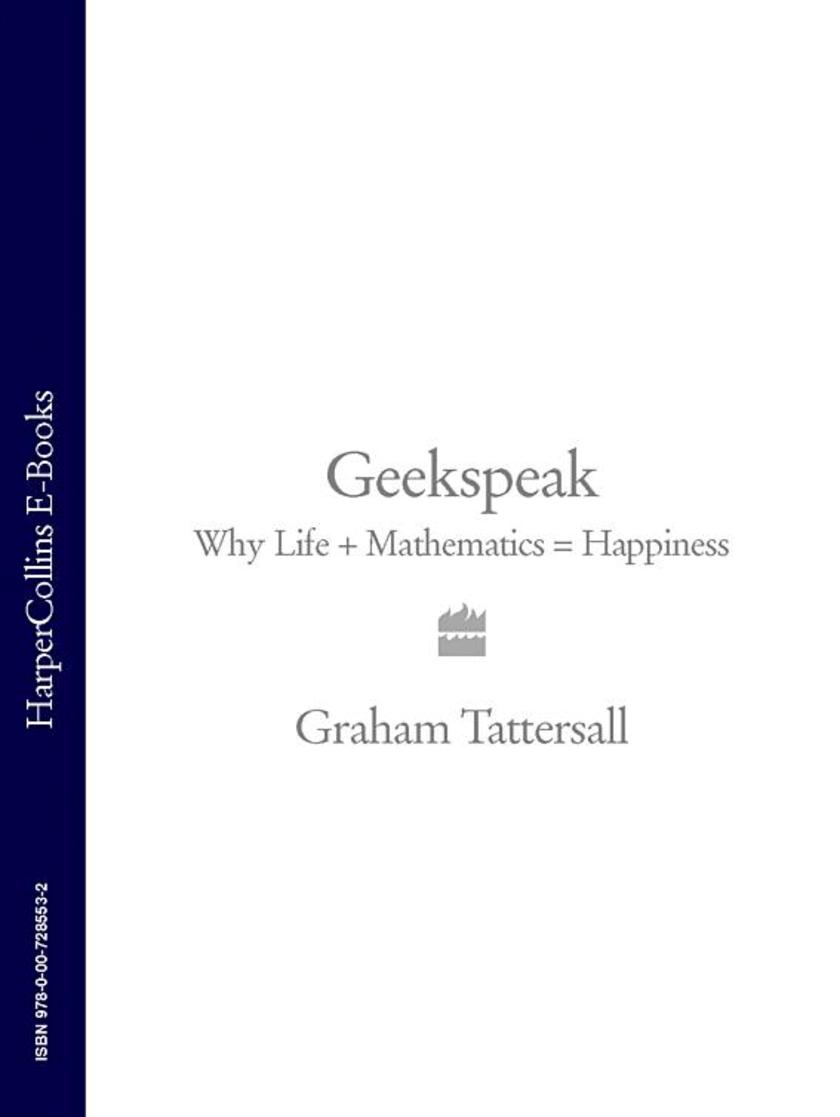
Geekspeak: Why Life + Mathematics = Happiness
¥66.22
The quirky offspring of ‘QI’ and ‘Freakonomics’, ‘Geekspeak’ melds ingenious statistical analysis with edifying trivia to explain away some curious facts of life. Curiosity is our human birthright, and destiny. As a species we are to prone to think, ruminate, reflect, cogitate, deliberate and philosophise. We do all these things, and why? To explain away the world around us, to find solace in knowledge, to answer all those seeming unanswerables: why are we here? Is there a God? Is there life after death? How many slaves on treadmills does it take to power my kettle? Yes, forget the Bible, ‘Geekspeak’ is the new oracle for 21st century living. Graham Tattersall, a confirmed and superior geek, has rescued maths from the prison of the classroom, imbued it with fresh new life, and put it to use in novel and unexpected ways. His ingenious, deceptively simple formula melds statistical analysis with personal experience and enlightening trivia to explain away some curious and oft-pondered mysteries of the world: how big is your vocabulary, how heavy is your house, do the dead outnumber the living, how powerful is a fly, how fast is a fart. With its recipe of sophisticated mathematical techniques, witty anecdotes and startling amount of learning, ‘Geekspeak’ is an essential tool for impressing friends, sounding intelligent and better understanding the fascinating world in which we live. Maths has a new champion, and the Geeks a new King.

The Wood for the Trees: The Long View of Nature from a Small Wood
¥73.58
From one of our greatest science writers, this biography of a beech-and-bluebell wood through diverse moods and changing seasons combines stunning natural history with the ancient history of the countryside to tell the full story of the British landscape. ‘The woods are the great beauty of this country… A fine forest-like beech wood far more beautiful than anything else which we have seen in its vicinity’ is how John Stuart Mill described a small patch of beech-and bluebell woodland, buried deeply in the Chiltern Hills and now owned by Richard Fortey. Drawing upon a lifetime of scientific expertise and abiding love of nature, Fortey uses his small wood to tell a wider story of the ever-changing British landscape, human influence on the countryside over many centuries and the vital interactions between flora, fauna and fungi. The trees provide a majestic stage for woodland animals and plants to reveal their own stories. Fortey presents his wood as an interwoven collection of different habitats rich in species. His attention ranges from the beech and cherry trees that dominate the wood to the flints underfoot; the red kites and woodpeckers that soar overhead; the lichens, mosses and liverworts decorating the branches as well as the myriad species of spiders, moths, beetles and crane-flies. The 300 species of fungi identified in the wood capture his attention as much as familiar deer, shrews and dormice. Fortey is a naturalist who believes that all organisms are as interesting as human beings – and certainly more important than the observer. So this book is a close examination of nature and human history. He proves that poetic writing is compatible with scientific precision. The book is filled with details of living animals and plants, charting the passage of the seasons, visits by fellow enthusiasts; the play of light between branches; the influence of geology; and how woodland influences history, architecture and industry. On every page he shows how an intimate study of one small wood can reveal so much about the natural world and demonstrates his relish for the incomparable pleasures of discovery.
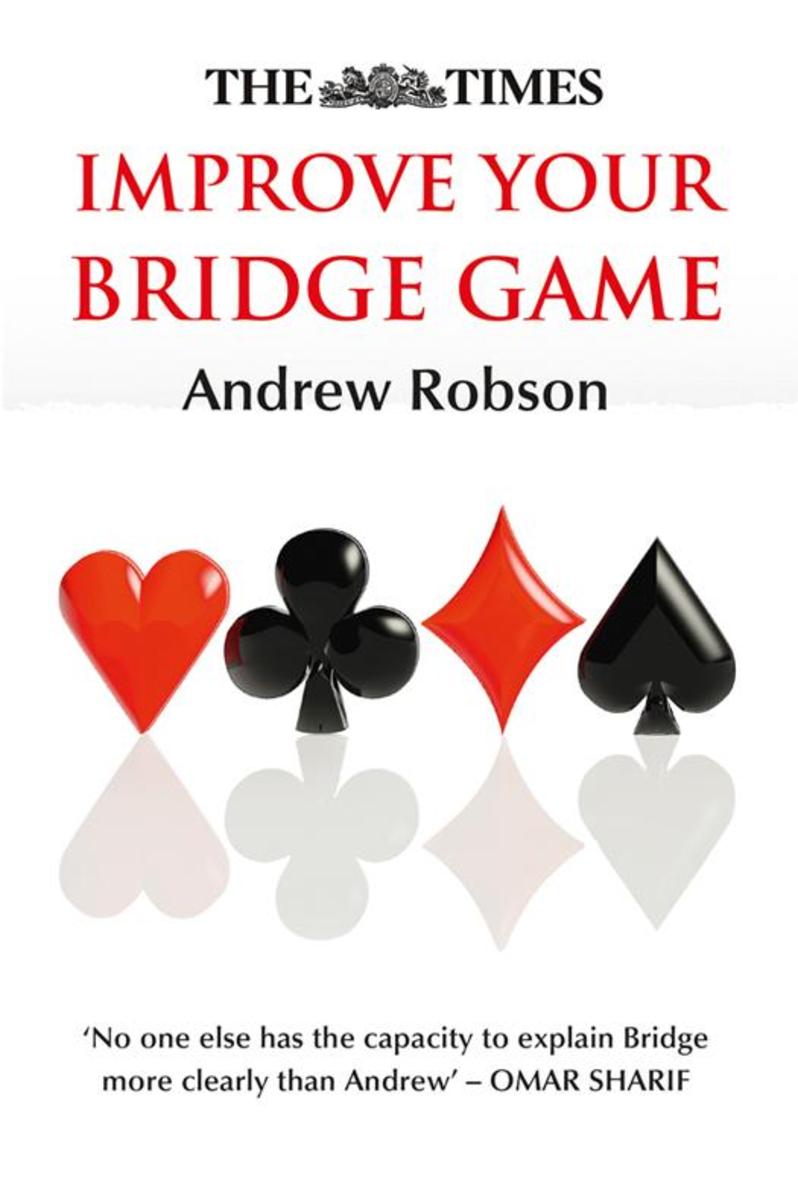
The Times Improve Your Bridge Game
¥44.24
Based on The Times Bridge column, an extensive bridge guide aimed at the less experienced or social player who longs to improve their game, with instructive deals and tips, as well as a helpful Index. Andrew Robson, The Times Bridge Correspondent, is both a champion Bridge player and an inspired teacher. He teaches and tutors at his Bridge Club and has acquired great practical knowledge about how people learn to play Bridge. Based on Andrew Robson’s Friday column in The Times, common scenarios are presented with an outline of what actually happened, as well as what should have happened. Along with every deal is the very popular handy tip ‘If you remember just one thing…’, which features throughout the book. The first section of the book, ‘The Game’, is a basic outline providing the key to playing a sensible game of Bridge, subdivided into ‘Bidding’, ‘Declarer Play’ and ‘Defence’. The reader can either read ‘The Game’ first, paying particular attention to the tips, or they can dip in and out of the book, picking a common mistake at random, with the option to cross-reference to the same tip in ‘The Game’ section. Bridge is now reaching a new audience, and is being played by people of all ages. Let Andrew Robson help you to improve your game! Previously published as The Times Bridge: Common Mistakes and How to Avoid Them

Card Games (Collins Gem)
¥38.36
Collins Gem Card Games provides an introduction to the most played family card games, with clear instructions and guidance on how to master each game. With a stylish new cover design, this best-selling Collins Gem title has been updated to provide even more accessible and helpful advice on learning today’s most popular card games. This new, colour edition will offer help and guidance in a more visually appealing style, making it a joy to learn how to play. Illustrated throughout with colour photographs, this edition includes detailed instructions on how to play over 60 different card games.
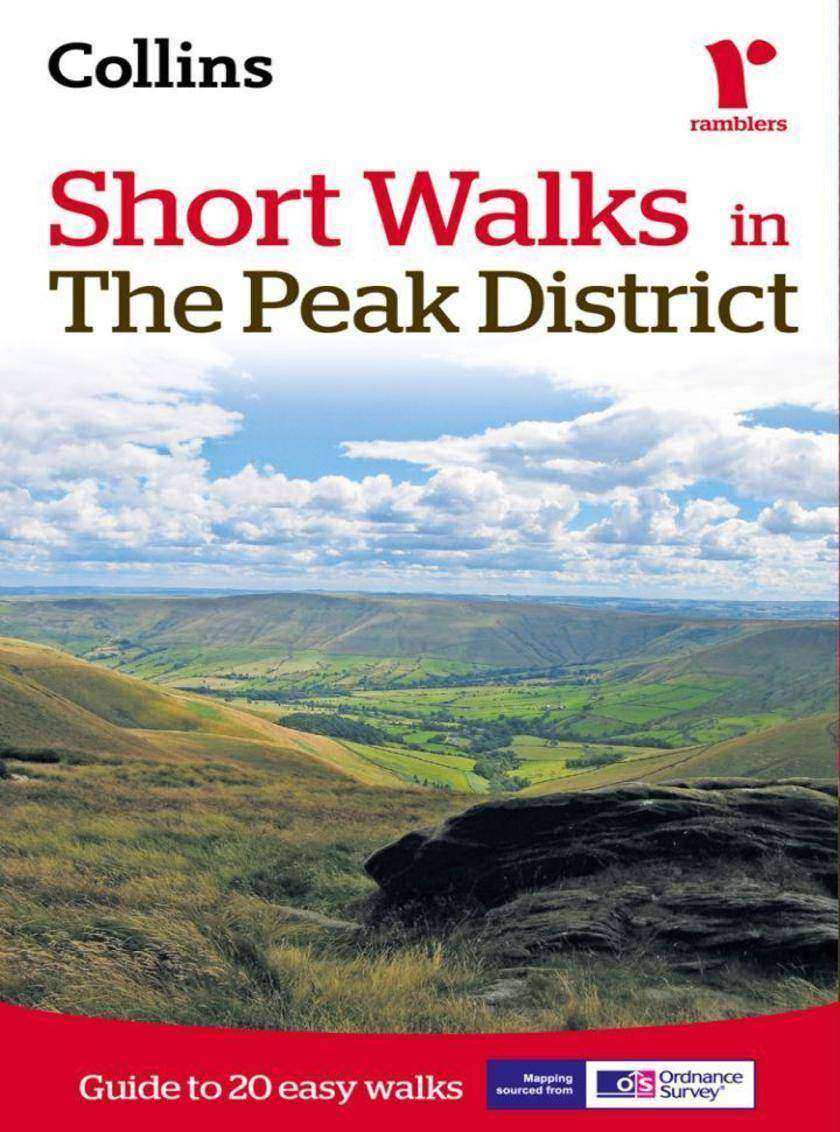
Short walks in the Peak District
¥44.24
The Peak District, with its gentle limestone White Peak and the wilder more dramatic gritstone Dark Peak, is a superb walking area. Explore the district with these 20 walks, all of which are 5 miles or under in length and can easily be completed in less than 3 hours. This guide, produced in co-operation with the Ramblers and featuring Ordnance Survey mapping, is the perfect way to really appreciate the stunning scenery of the Peak District. INCLUDES: ? 20 easy to follow walks which can be completed in 3 hours and under. ? Each walk has a detailed 1:25 000 Ordnance Survey map with the route clearly marked plus a detailed de*ion of the route. ? The walks have been chosen with issues like parking and refreshments in mind to make life easy for families. ? Packed with colour photographs of scenes you will see along the walk. The perfect guide for afternoon walks near to Chesterfield, Sheffield, Matlock, Buxton and Macclesfield.

BANANAGRAMS?
¥45.13
Discover the secret hints, tips and winning ways of the BANANAGRAMS? bunch! This little book contains the insider secrets to help you become Top Banana … Packed with curious words and fascinating facts, the Collins Little Book of Bananagrams? is a treasure in itself. It's the perfect gift for word lovers and BANANAGRAMS? players of all ages the world over, and includes: Dozens of proper nouns that you CAN play – in any word game! Three ways to turn tiles that save VITAL seconds How to use UK & US spellings to IMPROVE your game The one thing you MUST do in your first move 19 games you can play with BANANAGRAMS? tiles The ESSENTIAL tip that buys time whenever you call "PEEL!" A dictionary of WEORDS?: Weird Words That Win Word Games … And DOZENS of other top tips to boost your BANANAGRAMS? playing power! Over 6 million copies of the game sold.
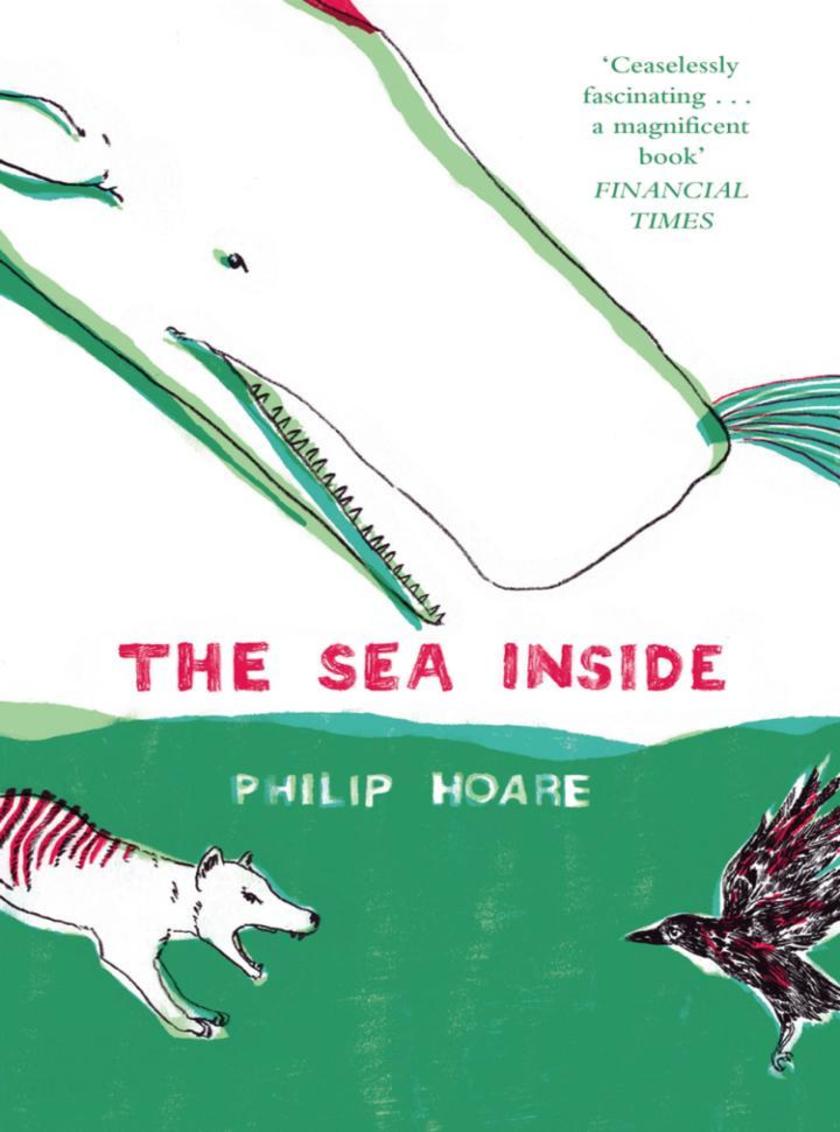
The Sea Inside
¥81.03
A startling new book, his most personal to date, from Philip Hoare, co-curator of ’Moby Dick: Big Read and winner of the 2009 Samuel Johnson Prize for ‘Leviathan’. The sea surrounds us. It gives us life, provides us with the air we breathe and the food we eat. It is ceaseless change and constant presence. It covers two-thirds of our planet. Yet caught up in our everyday lives, we barely notice it. In ‘The Sea Inside’, Philip Hoare sets out to rediscover the sea, its islands, birds and beasts. He begins on the south coast where he grew up, a place of almost monastic escape. From there he travels to the other side of the world – the Azores, Sri Lanka, New Zealand – in search of encounters with animals and people. Navigating between human and natural history, he asks what these stories mean for us now. Along the way we meet an amazing cast; from scientists to tattooed warriors; from ravens to whales and bizarre creatures that may, or may not, be extinct. Part memoir, part fantastical travelogue, ‘The Sea Inside’ takes us on an astounding journey of discovery.
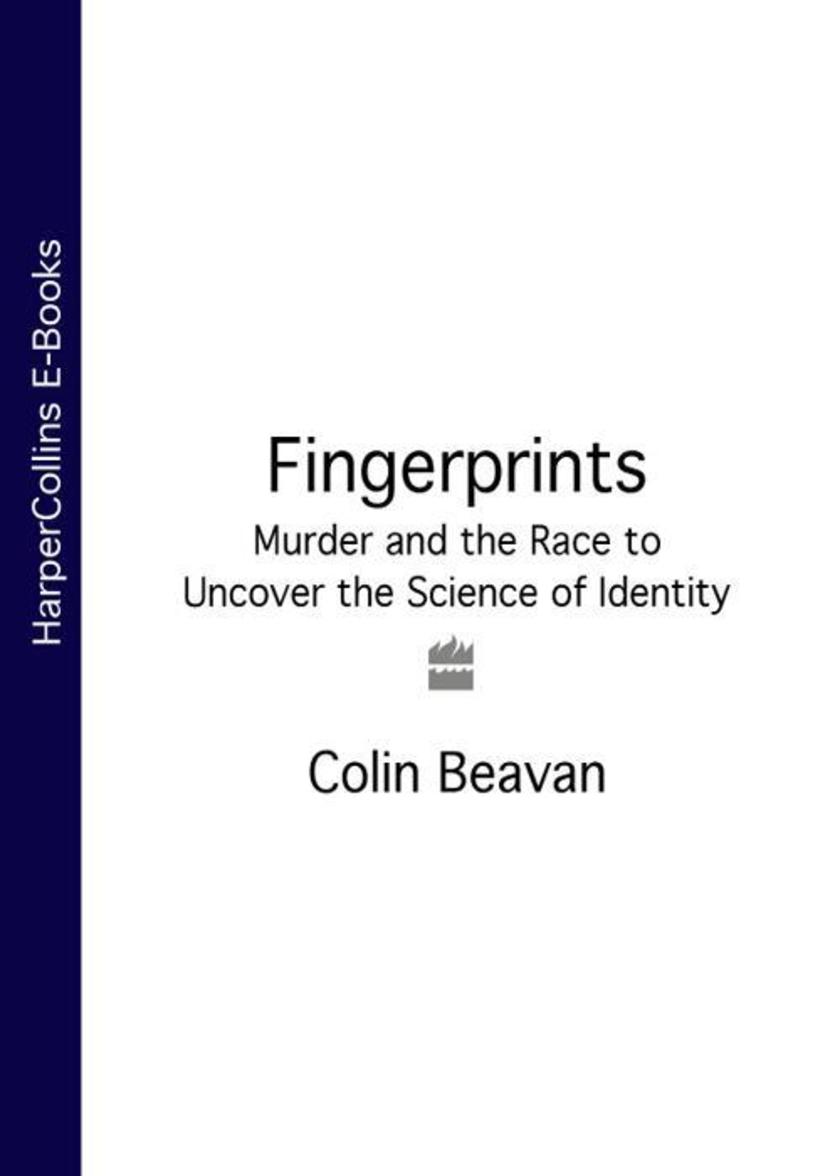
Fingerprints:Murder and the Race to Uncover the Science of Identity
¥61.51
This edition does not include illustrations. A fascinating exploration into the history of science and crime. In the tradition of ‘Fermat’s Last Theorem’, FINGERPRINTS is the story of the race to discover the secrets trapped in the whorls and arches found on the palm of one’s hand. In 1905 an elderly couple were found murdered in their shop in Deptford, London. The only evidence at the scene of the crime was a sweaty fingerprint on a cashbox. Was it possible that a single fingerprint could be enough to lead to a conviction? Could the pattern of these tracks hold the secrets of the science of identification? Through the story of three brilliant men:William Herschel, a colonial administrator in Indian, Henry Faulds, a missionary in Japan and Charles Darwin’s cousin, Francis Galton, the extraordinary story of the history of fingerprinting is revealed. It is a story of intellectual skulduggery and scientific brilliance. Packed with an extraordinary cast of individuals whose scientific breakthroughs helped solve one of the most brutal murders in English history and shape our understanding of identity forever.




 购物车
购物车 个人中心
个人中心



